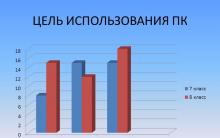Published with the assistance of the International Financial Holding FIBO Group, Ltd.
Translation V. Ionov
Editor A. Polovnikova
Corrector E. Smetannikova
Computer layout S. Novikov
Cover design Creative Bureau "Howard Roark"
© Publication in Russian, translation, design. Alpina Publisher LLC, 2012
Murphy J.
Visual investor. How to identify market trends / John Murphy; Per. from English – 2nd ed. – M.: Alpina Publisher, 2012.
ISBN 978-5-9614-2711-0
All rights reserved. No part of the electronic copy of this book may be reproduced in any form or by any means, including posting on the Internet or corporate networks, for private or public use without the written permission of the copyright owner.
Dedicated to Claire and Brian
Preface
This may come as a surprise, but I never imagined myself as a writer. I've always thought of myself as a market analyst who writes about what he sees on the charts. I was lucky and achieved some success in both areas. My first book, Technical Analysis of Futures Markets, which many call the bible of technical analysis, has been translated into half a dozen foreign languages. Its second edition, in addition to the new title “Technical Analysis of the Financial Markets” (Prentice Hall, 1999), had a wider scope and considered all financial markets. My other book is Intermarket Technical Analysis (John Wiley & Sons, 1991), which is considered a landmark because it brought into focus for the first time the relationships between financial markets and asset classes. The second edition of this book, Intermarket Analysis, was published only 12 years later.
It was decided to call this book “The Visual Investor” for two reasons. The fact is that in my market commentary on TV, I show pictures of the market in much the same way as a meteorologist shows his weather maps. This is a classic visual representation. There is no point in calling it anything else. Among other things, the term “technical analysis” scares many people. Even I don't fully understand what it means. So we decided to replace it with a term that accurately reflects the essence of the matter, in order to attract the attention of more people to this valuable form of market analysis, without overloading it with unnecessary technical baggage and jargon.
I started calling my occupation visual analysis also in order not to frighten television producers so much, who seemed to shy away from my topics, although TV is a visual media by definition. These days, no serious program can do without a schedule, but for some reason producers are reluctant to invite those who really know how to interpret graphs. Economists, securities analysts, and even television commentators are trying to find out what a particular chart means. But for some reason they don’t want to ask certified technical analysts (professional technical analysts now have diplomas). They probably fear that the answer will be “too technical” for them or the audience. Or maybe also because now you don’t have to watch TV to find out which markets are growing and which ones are falling. One of the goals of this second edition is to convince you that you are capable of independently conducting visual analysis of various financial markets. And it's not as difficult as it might seem.
Most market veterans come to one thing over the years: they begin to simplify their work. To a certain extent, this may be due to the fact that as we age, energy leaves us. Personally, I like to think that the desire to simplify is a manifestation of experience, and hopefully also maturity and wisdom. When I started my career as a technical analyst 40 years ago, I used to work through (and try to apply) every technical tool and theory that came my way. Believe me, there were a lot of them. I have studied and tried almost everything. And in each method there was something valuable. When the study of intermarket interactions captivated me and forced me to include all financial markets from around the world in my field of view, there was simply no time left for in-depth analysis of the charts for each of them (especially using analytical programs that include up to 80 technical indicators). And then I realized that this was not necessary. All you really need to do is identify which markets are growing and which are not. Yes, it's really that simple.
I usually scan hundreds of financial markets in a day. I don't have to look at every chart to do this. We now have screening tools (which I'll talk about later) to help us quickly determine which markets are rising and which are falling. In the stock market, for example, you can tell the strongest market sectors and industry groups from the weakest on any given day at a glance. You can then figure out which stocks are causing their group to rise or fall. And only when we identify the leaders (or those trailing behind), should we move on to the charts. The same can be done with foreign stocks, or with any other financial market, such as the bond, commodity or currency markets. The Internet makes things a lot easier.
One of the good things about scanning multiple markets is that it allows me to see the big picture. Since all financial markets are interconnected in one way or another, it is very useful to have an idea of the underlying trend. A rise in stock prices is usually accompanied by a fall in bond prices. A fall in the dollar usually coincides with a rise in the prices of commodities and commodity-related stocks. Strong foreign markets usually signal growth in the US market and vice versa. Stock market strength tends to favor economically sensitive stock groups, such as technology and transportation stocks. In soft markets, defensive stocks such as consumer staples and medical products tend to outperform. No market operates in a vacuum. Traders who focus on only a few markets are missing out on valuable information. By the time you finish reading this book, you will have a better understanding of the significance of the big picture.
The second edition of The Visual Investor follows the same structure as the first. I tried very hard not to complicate the material and chose only those indicators that I considered the most useful. If you can tell the difference between a rise and a fall by looking at a graph, then you should have no problem understanding visual analysis techniques. Knowing why the market rises or falls is interesting, but not necessary. The media is full of people who will tell you why they think this is happening. But in practice this doesn't matter. There are also plenty of people in the media telling how markets should behave. However, all that matters is how markets actually behave. Visual analysis is the best way to understand this. This is what this book is dedicated to.
As you master the principles of visual analysis, you will gain confidence. You may find that you don’t have to listen to all those analysts and economists who like to speculate about why the market behaved the way it did yesterday (even though they didn’t know it themselves or didn’t bother to tell them the day before yesterday). You will begin to realize that all these financial “experts” actually have nothing worth saying. Just remember all those experts who in 2007 did not see the mortgage bubble inflating until it burst. Or those experts who assured us in the summer of 2007 that this subprime mortgage mess wasn't that serious after all. Even the Federal Reserve Board insisted in the second half of 2007 that the economy was doing well and inflation was tightly controlled. And while they were saying this, the stock market and the US dollar were falling, and bond and commodity prices were rising - the classic formula for stagflation. By mid-2008, the Fed admitted that it was trying to prop up the weakening American economy while raising inflation. It took these experts seven months to see what the markets had been saying all along. This is why we prefer to watch the markets rather than listen to experts.
When I first began writing about cross-market principles more than a decade ago, many of the strategies were challenging to implement. Commodities, for example, have been the best-performing asset class over the past five years. In the past, the only opportunity to play on this was the futures markets. The advent of exchange-traded funds (ETFs) has greatly simplified the average investor's access to commodities. ETFs have facilitated trading in other sectors and made foreign stocks available. I'll show you how much easier ETFs have made the life of the visual investor.
I decided from the very beginning to make this book " visual." I wanted to show “pictures” of the market that speak for themselves. That's why you will find numerous graphs in the book. I selected them from the latest market sources. These are not some idealized textbook examples, but living illustrations of the principles of visual analysis in current market conditions. I hope they were chosen well. Remember that the only question you need to constantly ask yourself is: “Where is the market I am studying going up or down?” If you can answer it, everything will be okay.
John MurphyJune 2008
Acknowledgments
In the first edition of this book, I recommended that investors purchase chart analysis software and connect to an online information service if they want to engage in visual analysis. Thanks to the growth of online resources, all you need to do now is find a good analytics website. In other words, all you need to do is register on the website and start analyzing charts. One such site is StockCharts.com As the chief technical analyst (and co-owner) of this award-winning site, I have a lot to say in its favor. Needless to say, I am very proud of the result. All charts (and visual tools) in this book are borrowed from there. I would like to thank Chip Anderson, President of StockCharts.com, for allowing me to do this. I would also like to thank Mike Kivowitz of Leafygreen.info for his help with the illustrations. More information about StockCharts.com can be found at the end of the book. This is a good place to start with visual analysis.
Part I. Introduction
Traders and investors have been using a visual approach to investing for over a century. Until the last decade, visual analysis as a serious method of trading and investing was largely the province of specialists and professional traders. Most successful traders simply won't trade without looking at the charts first. Even the Federal Reserve Board now uses price charts.
What changed
For a long time, the world of visual trading was closed to the average investor. The intimidating jargon and complex formulas repelled non-professionals and were not part of their interests. However, two very significant changes have occurred over the past decade. First of all, inexpensive personal computers and analytical Internet services appeared. Today's investors have an impressive array of technical and visual tools that even professionals did not have at their disposal 30 years ago.
The second change is associated with a significant expansion of the industry mutual funds, which now outnumber the shares listed on the New York Stock Exchange. This phenomenal growth has brought both benefits and challenges to ordinary investors. The problem now turns out to be choosing the right mutual fund. In other words, the growth in the number of mutual funds has made the life of the individual investor very difficult, although they were created specifically for simplification investing. If a person did not have the time or experience to select stocks, then he could delegate this task to the mutual fund manager. In addition to professional management, the fund provided him with diversification. Previously, by purchasing one fund, an investor gained access to the entire market. Now mutual funds are so segmented that he is simply overwhelmed by the abundance of options. Over the past decade, exchange-traded funds (ETFs) have taken the place of many mutual funds.
Fund categories
Domestic market equity funds are classified by purpose and operating style as funds aggressive growth(aggressive growth), growth(growth), growth and income(growth and income) and income from shares(equity income). The funds are also divided according to the market capitalization of the stocks included in their portfolios. Large Cap Equity Funds(large-cap stock funds) are limited to stocks included in the Standard & Poor's 500 index. Mid-Cap Equity Funds(midsize funds) work with stocks included in the S&P 400 Mid-Cap and Wilshire Mid-Cap 750 indexes. Small Cap Equity Funds(small-cap funds) form portfolios of stocks included in the Russell 2000 or S&P 600 Small-Cap indexes. In addition, equity funds can be classified according to their specialization in different sectors of the stock market - such as technology, heavy industry, medical manufacturing, financial services, energy, precious metals And public utilities. Sectors, in turn, are divided into industries, which are handled by even more specialized funds. Thus, the technology sector includes funds with the following specialization: computers, defense and aerospace, communications, electronics, software, semiconductors, telecommunications. For example, the management company Fidelity Investments offers a choice of 40 funds specializing in various sectors.
Global funds
Another direction is global investing. Now, to enter the market of other countries or geographic regions, an investor only needs to select a suitable equity fund. As a result, investors should monitor market movements not only in the United States, but around the world. Investing abroad involves higher risk than in domestic markets, but the rewards more than make up for it. From 2003 to the end of 2007, the growth of foreign stocks exceeded the growth of American stocks by more than two times.
Over the same four years, emerging markets grew four times more than the US market. Investing overseas allows you to diversify your portfolio of U.S. stocks, which is why financial advisors recommend placing about a third of your portfolio abroad to increase returns and reduce risk.
Investor needs more information
Many investors have found funds alternative to choice shares However, the level of segmentation of this industry requires the investor to be more informed and actively involved in choosing the right fund. Investors need to know what is happening in different sectors of the US market, as well as in global markets. The breadth of choice available to investors today is a double-edged sword.
The same applies to the technological advances of the last decade. The problem is how to select and use the available resources. Technology has overtaken the public in its ability to effectively use new information. That is why the purpose of this book is to help the average investor quickly master visual trading and show how its relatively simple principles can solve the problem of sector investing primarily through exchange-traded funds.
The benefits of visual investing
The positive side of the growing specialization of funds is the unprecedented variety of investment instruments. Thus, investors who prefer a certain market sector or industry, but do not want to engage in stock selection, can now purchase shares of an entire group. In addition, sector funds provide the investor with additional opportunities to diversify the main stock portfolio and more aggressively build up one or another part of it. This is when visual analysis comes in handy.
The tools discussed in this book are applicable to any market or fund anywhere in the world. Thanks to the computer and the availability of price data, the procedure for monitoring and analyzing funds has become extremely simplified. The power of a personal computer can also be used to monitor portfolios, backtest buying and selling rules, scan charts for investment opportunities, and rank funds by their performance. The challenges of mastering new technologies and applying them to investing in funds and sectors, of course, remain – but so do the benefits. If you have entered the market, it means that you are not afraid of these difficulties. This book will show you how to take advantage of the positives.
Murphy J. Intermarket technical analysis: trading strategies for global markets of stocks, bonds, commodities and currencies. Per. from English – M.: Diagram, 2002.
Murphy J. Intermarket analysis: principles of interaction of financial markets. Per. from English – M.: Alpina Publisher, 2012.
John Murphy, host of the famous television program about the financial market and the author of two popular books and, is now one of the main authorities in the field of market analysis. This time his practical experience and professionalism were embodied in a book "Visual Investor", which is an accessible tutorial on visual analysis. After explaining key concepts and terms, Murphy teaches readers the tricks to deciphering volume and price charts—the “pictures” that help them make sound investment decisions and earn consistent profits. The author places the main emphasis on global and sector investing using mutual funds. Murphy teaches how to analyze and track the status of these mutual funds on market charts.
Visual analysis will allow investors to examine the behavior of stocks or industry groups in the stock market without using complex mathematical formulas and technical concepts. On the contrary, with its help, only based on price movements, you can simply and quickly understand what the current alignment of the fundamental parameters of a particular stock is: “bearish” or “bullish.” As Murphy says, the most important thing about visual analysis is the ability to see when a stock is going up and when it's going down, without having to explain why it is behaving that way: "Knowing why a stock moves is certainly fun, but it's the pictures that really matter." , simple lines on a graph."
Books"/>
|
Visual analysis allows an investor to examine the behavior of a stock or industry group of the stock market without resorting to complex mathematical formulas and technical concepts. On the contrary, with its help, just by price movement, you can quickly and easily determine whether the fundamental characteristics of a particular stock are bullish or bearish. As Murphy argues, the key to visual analysis is the ability to distinguish when a stock is rising and falling, rather than explaining why it behaves the way it does: Knowing why a stock moves is certainly interesting, but what really matters is the picture, the simple line. on the chart. The visual investor does not avoid the difficulties of working with charts, which makes their practical development easier. The author provides a broad overview of all major areas of technical analysis, from various types of charts and market indicators to sector analysis and global investing. Using real examples and clear graphs, you will learn: to carry out... |
Other books on similar topics:
| Author | Book | Description | Year | Price | Book type |
|---|---|---|---|---|---|
| Visual analysis allows an investor to examine the behavior of a stock or industry group of the stock market without resorting to complex mathematical formulas and technical concepts. On the contrary, with its help... - SmartBook, Euro, (format: 70x100/16, 326 pages) | 2010 | 896 | paper book | ||
| From the publisher: About visual investing and various methods of graphical analysis. The author shows how to read charts to help make investment decisions, how to determine the direction... - (format: 70x100/16 (~170x240 mm), 328 pp. (graphs) pp.) | 2012 | 574 | paper book | ||
| 326 pp. Visual analysis allows an investor to examine the behavior of a stock or industry group in the stock market. A publication for investors and traders. A visual investor does not avoid difficulties in his work... - SmartBook, (format: 70x100/16, 328 pages) | 2010 | 896 | paper book | ||
| 326 pp. Visual analysis allows an investor to examine the behavior of a stock or industry group in the stock market. A publication for investors and traders. A visual investor does not avoid difficulties in his work... - DIAGRAM, (format: 70x100/16, 328 pages) | 2004 | 896 | paper book | ||
| This is the second edition of the best-selling book by one of the world's most renowned market analysts, John Murphy. It has been completely updated in accordance with current market realities. The book introduces... - Alpina Digital, e-book | 2012 | 459 | eBook |
Reviews about the book:
This book tells you how to use technical analysis in the stock market. If you compare it with others, it covers in more detail almost all the technical analysis tools that most traders use.
Blanar Vyacheslav 0
The book is only for beginner traders who do not have the slightest idea about the concept of “technical analysis”. It is poorly written: there are ambiguous and incomprehensible passages in the text (I don’t know if these are the faults of the translator or the author), and the “Indicators” section is generally written very poorly: the author did not even bother to provide comprehensive explanations of how to interpret the indicator readings - after reading questions will remain. The desire for abbreviation did not lead to any good: the author skimmed over the top without delving into the essence and without delving into “concepts that are too complex for non-specialists.” The style of presentation is tongue-tied and superficial. No matter how much I tried to see the author’s approach in the book, I could not, probably because the author does not have one - after all, he is not a trader. His whole “method” is to collect more indicators and try to snatch money here and there: “The best way to increase the significance of any indicator is to combine it with another indicator”, “The most important thing for a visual investor is to know which group of indicators choose in one case or another”, “Combining indicators always gives an advantage”, etc. The whole book is full of such nonsense, which has nothing to do with successful stock trading. The translation and editing match the content - there are typos even on the cover. In general, the book is complete misery and an example of a careless attitude to business, written, obviously, with the aim of making money on naive beginners. Bottom line - I don’t recommend reading it, it’s better to take a good book for beginners. Let me close with one quote: “Simplicity leads to discipline. To be successful, a trader must choose a small number of markets and a small set of tools and master them well.” A. Elder.
A great book for beginners. I can’t imagine how it is possible to explain the basic postulates of graphical and technical analysis more simply and concisely. The first two sections are quite enough to begin a competent analysis of graphs. Previously, I thought that the first book for beginners should be “Secrets of Stock Trading.” So, this book should be the second. Advanced users are unlikely to find anything new here. The third section is devoted to intermarket analysis. THOSE. relationships between the movements of stock prices, bonds, interest rates, and raw materials currencies. I have not seen such information in other books. Very interesting and useful. Well, in conclusion, a lot of recommendations are given for investing in various mutual funds. Methods are given for selecting the most attractive mutual funds at the moment, and recommendations for choosing entry and exit points. The book contains a huge amount of graphic material showing in detail everything that is described. In general, the book will undoubtedly be useful to novice traders and anyone involved in investing in mutual funds.
Alexey 0
See also in other dictionaries:
Precious metals- (Precious metals) Precious metals are rare metals that are distinguished by their brilliance, beauty and resistance to corrosion History of the extraction of precious metals, varieties, properties, applications, distribution in nature, alloys... ... Investor Encyclopedia
Euro- (Euro) Euro is the single European currency Euro: description of coins and banknotes, history of creation and development, place in the world economy Contents >>>>>>>>>> ... Investor Encyclopedia
Allplan- Type Computer-aided design system Developer ... Wikipedia
Published with the assistance of the International Financial Holding FIBO Group, Ltd.
Translation V. Ionov
Editor A. Polovnikova
Corrector E. Smetannikova
Computer layout S. Novikov
Cover design Creative Bureau "Howard Roark"
© Publication in Russian, translation, design. Alpina Publisher LLC, 2012
© Electronic edition. LLC "LitRes", 2013
Murphy J.
Visual investor. How to identify market trends / John Murphy; Per. from English – 2nd ed. – M.: Alpina Publisher, 2012.
ISBN 978-5-9614-2711-0
All rights reserved. No part of the electronic copy of this book may be reproduced in any form or by any means, including posting on the Internet or corporate networks, for private or public use without the written permission of the copyright owner.
Dedicated to Claire and Brian
Preface
This may come as a surprise, but I never imagined myself as a writer. I've always thought of myself as a market analyst who writes about what he sees on the charts. I was lucky and achieved some success in both areas. My first book, Technical Analysis of Futures Markets, which many call the bible of technical analysis, has been translated into half a dozen foreign languages. Its second edition, in addition to the new title “Technical Analysis of the Financial Markets” (Prentice Hall, 1999), had a wider scope and considered all financial markets. My other book is Intermarket Technical Analysis (John Wiley & Sons, 1991), which is considered a landmark because it brought into focus for the first time the relationships between financial markets and asset classes. The second edition of this book, Intermarket Analysis, was published only 12 years later.
It was decided to call this book “The Visual Investor” for two reasons. The fact is that in my market commentary on TV, I show pictures of the market in much the same way as a meteorologist shows his weather maps. This is a classic visual representation. There is no point in calling it anything else. Among other things, the term “technical analysis” scares many people. Even I don't fully understand what it means. So we decided to replace it with a term that accurately reflects the essence of the matter, in order to attract the attention of more people to this valuable form of market analysis, without overloading it with unnecessary technical baggage and jargon.
I started calling my occupation visual analysis also in order not to frighten television producers so much, who seemed to shy away from my topics, although TV is a visual media by definition. These days, no serious program can do without a schedule, but for some reason producers are reluctant to invite those who really know how to interpret graphs. Economists, securities analysts, and even television commentators are trying to find out what a particular chart means. But for some reason they don’t want to ask certified technical analysts (professional technical analysts now have diplomas). They probably fear that the answer will be “too technical” for them or the audience. Or maybe also because now you don’t have to watch TV to find out which markets are growing and which ones are falling. One of the goals of this second edition is to convince you that you are capable of independently conducting visual analysis of various financial markets. And it's not as difficult as it might seem.
Most market veterans come to one thing over the years: they begin to simplify their work. To a certain extent, this may be due to the fact that as we age, energy leaves us. Personally, I like to think that the desire to simplify is a manifestation of experience, and hopefully also maturity and wisdom. When I started my career as a technical analyst 40 years ago, I used to work through (and try to apply) every technical tool and theory that came my way. Believe me, there were a lot of them. I have studied and tried almost everything. And in each method there was something valuable. When the study of intermarket interactions captivated me and forced me to include all financial markets from around the world in my field of view, there was simply no time left for in-depth analysis of the charts for each of them (especially using analytical programs that include up to 80 technical indicators). And then I realized that this was not necessary. All you really need to do is identify which markets are growing and which are not. Yes, it's really that simple.
I usually scan hundreds of financial markets in a day. I don't have to look at every chart to do this. We now have screening tools (which I'll talk about later) to help us quickly determine which markets are rising and which are falling. In the stock market, for example, you can tell the strongest market sectors and industry groups from the weakest on any given day at a glance. You can then figure out which stocks are causing their group to rise or fall. And only when we identify the leaders (or those trailing behind), should we move on to the charts. The same can be done with foreign stocks, or with any other financial market, such as the bond, commodity or currency markets. The Internet makes things a lot easier.
One of the good things about scanning multiple markets is that it allows me to see the big picture. Since all financial markets are interconnected in one way or another, it is very useful to have an idea of the underlying trend. A rise in stock prices is usually accompanied by a fall in bond prices. A fall in the dollar usually coincides with a rise in the prices of commodities and commodity-related stocks. Strong foreign markets usually signal growth in the US market and vice versa. Stock market strength tends to favor economically sensitive stock groups, such as technology and transportation stocks. In soft markets, defensive stocks such as consumer staples and medical products tend to outperform. No market operates in a vacuum. Traders who focus on only a few markets are missing out on valuable information. By the time you finish reading this book, you will have a better understanding of the significance of the big picture.
The second edition of The Visual Investor follows the same structure as the first. I tried very hard not to complicate the material and chose only those indicators that I considered the most useful. If you can tell the difference between a rise and a fall by looking at a graph, then you should have no problem understanding visual analysis techniques. Knowing why the market rises or falls is interesting, but not necessary. The media is full of people who will tell you why they think this is happening. But in practice this doesn't matter. There are also plenty of people in the media telling how markets should behave. However, all that matters is how markets actually behave. Visual analysis is the best way to understand this. This is what this book is dedicated to.
As you master the principles of visual analysis, you will gain confidence. You may find that you don’t have to listen to all those analysts and economists who like to speculate about why the market behaved the way it did yesterday (even though they didn’t know it themselves or didn’t bother to tell them the day before yesterday). You will begin to realize that all these financial “experts” actually have nothing worth saying. Just remember all those experts who in 2007 did not see the mortgage bubble inflating until it burst. Or those experts who assured us in the summer of 2007 that this subprime mortgage mess wasn't that serious after all. Even the Federal Reserve Board insisted in the second half of 2007 that the economy was doing well and inflation was tightly controlled. And while they were saying this, the stock market and the US dollar were falling, and bond and commodity prices were rising - the classic formula for stagflation. By mid-2008, the Fed admitted that it was trying to prop up the weakening American economy while raising inflation. It took these experts seven months to see what the markets had been saying all along. This is why we prefer to watch the markets rather than listen to experts.
Visual investor. How to spot market trends John Murphy
(No ratings yet)
 Title: Visual investor. How to spot market trends
Title: Visual investor. How to spot market trends
Author: John Murphy
Year: 2012
Genre: Banking, Securities, investments, Foreign business literature
About the book “The Visual Investor. How to spot market trends" John Murphy
This is the second edition of the best-selling book by one of the world's most renowned market analysts, John Murphy. It has been completely updated in accordance with current market realities. The book introduces the reader to the world of visual investing and presents a variety of graphical analysis methods. The author shows how to read charts to help make investment decisions, and how to determine the direction of markets by visually comparing charts without using complex formulas or techniques. The book clearly shows the reader that visual analysis of financial markets can be carried out independently and it is not so difficult. All you really need to do is determine which markets are growing and which are not. Visual analysis is the best way to understand this.
The book, written in simple and understandable language, is addressed to both specialists in the field of investing and trading, as well as individual investors, as well as those interested in these issues.
On our website about books, you can download the site for free without registration or read online the book “The Visual Investor. How to identify market trends" by John Murphy in epub, fb2, txt, rtf, pdf formats for iPad, iPhone, Android and Kindle. The book will give you a lot of pleasant moments and real pleasure from reading. You can buy the full version from our partner. Also, here you will find the latest news from the literary world, learn the biography of your favorite authors. For beginning writers, there is a separate section with useful tips and tricks, interesting articles, thanks to which you yourself can try your hand at literary crafts.
Download the book “The Visual Investor” for free. How to spot market trends" John Murphy
(Fragment)
In format fb2: Download
In format rtf: Download
In format epub:











Business of growing strawberries all year round, costs and profitability
The best mailers for making money
Easy earnings from 1000 rubles without investments
Accounting for excise taxes at distilleries
Money in real estate: how much does it cost to open a hostel